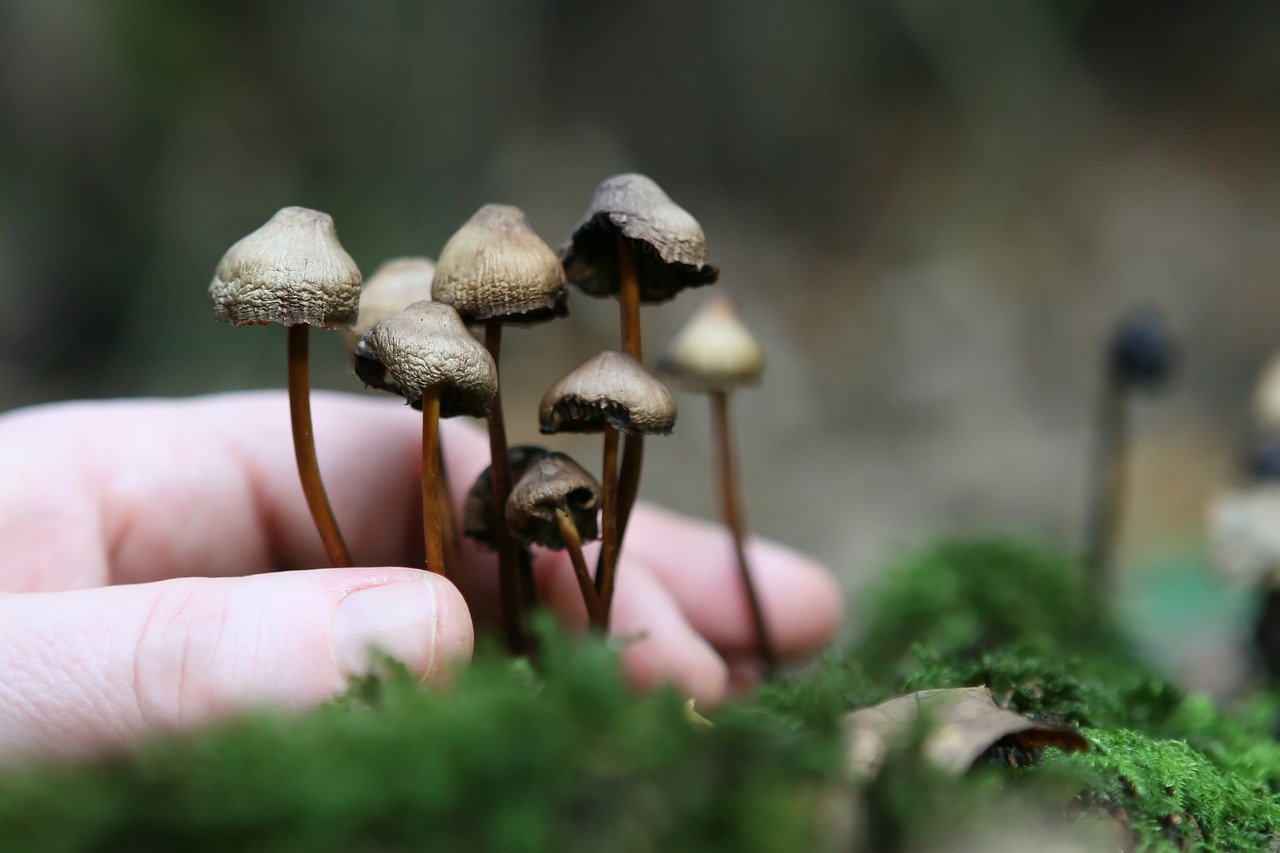Deciphering Mycelium
Mycelium, the foundational structure of fungi, acts as the digestive system for mushrooms. It is responsible for sourcing nutrients and breaking them down into a digestible form for the fungus. As a byproduct, this process enriches the soil, providing vital nutrients for other plants and creating a nutrient-rich biomass, suitable as mulch for gardening.
Besides facilitating mushroom growth, mycelium networks play a crucial role in the growth and health of numerous terrestrial plants, including trees. For instance, a symbiotic exchange occurs between tree roots and fungi where the tree provides sugars (carbon) to the fungus and receives essential minerals such as nitrogen and phosphorus in return. Learn more about this symbiotic relationship here.
Fascinatingly, mycelium networks are akin to underground communication systems among plants, comparable to neural networks in our brains. Recent scientific studies indicate that fungi may influence primitive nervous systems in plants and trees, potentially affecting their communication, memory, and learning processes. Moreover, mycelium enhances soil health by breaking down decaying organic matter and detoxifying any pollutants.
If you’re keen on growing magic mushrooms, it’s essential to understand mycelium development. While the cultivation process can be tricky for beginners, understanding mycelium is the first crucial step. Though you can always opt to buy mushrooms from Shrooms Near Me Canada online, gaining insights about mycelium can enrich your cultivation journey.
Mycelium Growth Process
Upon encountering a growth-friendly environment, fungal spores initiate the formation of two types of mycelium. The first, known as primary or monokaryotic mycelium, is not typically visible to the naked eye and features a single nucleus in each cell. The second type, referred to as secondary or dikaryotic mycelium, is visible and contains two nuclei in each cell.
When fungal spores begin to germinate, they form an initial structure known as the monokaryotic mycelium. Upon encountering another compatible monokaryotic mycelium, they can merge to form a dikaryotic mycelium, which is considered the second stage. The secondary mycelium is the one capable of producing mushrooms or sclerotia.
Types of Mycelia
Mycelia can be classified into three types, with two of them indicating successful cultivation.
- Rhizomorphic mycelia appear like strings and are easy to identify. Composed of hyphae units, the network of grouped hyphae is referred to as rhizomorphs. Rhizomorphic mycelia spread out first, then send back chemical signals to the colony indicating that the area ahead is suitable for providing nutrients. The rest of the mycelia then follow. The hyphae at the tip of the rhizomorphic mycelia release peroxidase, which decomposes the material in front of it for food. The hyphae then spread across the material, distributing the nutrients throughout the colony. Many cultivators prefer this type of mycelia due to the increased likelihood of mushroom production as the Rhizomorphic mycelia sprout from the substrate.
- Tomentose or “Fluffy” mycelia, although similar to Rhizomorphic mycelia, possess a unique arrangement of fluffy mycelia strands. While these strands might not be immediately noticeable, they do exist. Their cotton-ball-like appearance indicates that the strands are clustered together. Whether your mycelia develop tomentose or rhizomorphic traits largely depends on the growth environment. There is an ongoing debate among cultivators regarding the influence of the type of mycelia on the growth rate or the size of the harvest.
- Aerial mycelia occur when the growing conditions are less than ideal. Under these circumstances, the mycelia tend to grow outward rather than spreading across the medium or clustering together. Often mistaken for bacterial infection, this type of mycelia can obstruct your mushroom cultivation, resulting in weaker, smaller mushrooms. Aerial mycelia typically arise due to inadequate fresh air exchange and high humidity.
Distinguishing Mould from Mycelium
It is vital to differentiate between mould and mycelium. If you notice green, blue, grey, or black patches on or in your fruiting box, it’s likely that your culture is contaminated. Discoloration is the primary indicator. However, blue spots could simply be bruises.
Cobweb moulds are usually quite conspicuous. Contrary to the bright The Mycelium is usually white but may have a grey tint. It exhibits a fluffy, fibrous texture. Although cobweb moulds and green moulds do not pose a threat to human health, they can detrimentally affect the health of your mushrooms.
Shrooms Near Me Canada: Your Trusted Resource for Mushroom Information
Whenever the topic of psychedelic mushrooms in Canada arises, remember Shrooms Near Me Canada. Our continuous aim is to deliver essential information that ensures a safe and enjoyable mushroom experience.





